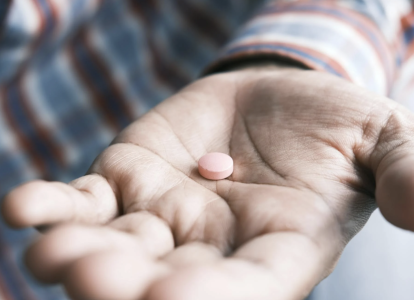Are you still taking vitamin D this summer? Here’s what experts say
By
Veronica E.
- Replies 0
Disclaimer: The information provided in this article is for educational purposes only and is not intended as a substitute for professional medical advice, diagnosis, or treatment. Always consult your physician or other qualified healthcare providers with any questions you may have regarding a medical condition or before making any changes to your health regimen.
The days are longer, the sun is shining—and for many, that means packing away the winter supplements.
But before you stop taking your daily dose of vitamin D, it’s worth asking: are you really getting enough from sunshine alone?
Despite its nickname as the “sunshine vitamin,” getting enough vitamin D isn’t always as simple as stepping outside.
New research and expert advice suggest that even in the peak of summer, many older adults may still need to supplement.
Let’s unpack the facts and help you decide if a summer break from vitamin D is really a good idea.

Why sunlight alone might not cut it
Vitamin D is produced by your body when UV-B rays from the sun hit your skin. But several common factors can limit how much your body actually makes:
Also read: Migraine relief from a drive-thru? Fans claim this go-to order does the trick
How much do you really need?
According to experts, most adults up to age 70 need 600 IU (15 mcg) of vitamin D daily, while those over 70 need 800 IU (20 mcg).
But that’s just a guideline.
Your actual needs may vary depending on your lifestyle, diet, and health status.
Dr. Brynna Connor, a physician focused on healthy aging, notes that 10–30 minutes of mid-day sun exposure a few times a week can be enough for some people—but that’s under ideal conditions, without sunscreen or shade.
Also read: Are you taking vitamin D at the wrong time? Experts reveal the secret to maximum absorption
Food sources help, but may not be enough
Vitamin D is found in a few foods like fatty fish (salmon, trout, sardines), egg yolks, beef liver, and mushrooms exposed to UV light.
Some milk, plant milks, cereals, and juices are also fortified.
Still, most people don’t get enough through diet alone—especially if they have limited sun exposure.
Is it possible to get too much?
Yes. Vitamin D is fat-soluble, so excess amounts are stored in your body.
Taking too much can lead to nausea, weakness, kidney problems, and even dangerous heart rhythms.
Don’t exceed your recommended dose without checking with your healthcare provider.
Also read: Are you vitamin D deficient? Spot the signs and boost your levels fast!
So, should you keep taking it during summer?
In many cases, yes—especially if you’re over 60, live in a northern state, have darker skin, or avoid sun exposure.
Supplements are inexpensive, and the risks of deficiency—such as bone loss, fatigue, or immune issues—can be significant.
Still, the best way to know is to ask for a blood test.
Your doctor can check your levels and help tailor a supplement plan just for you.
Also read: Struggling to sleep? These 5 nutrients might be the missing piece
Summer tips for healthy vitamin D levels
Even in summer, getting enough vitamin D isn’t guaranteed.
A quick blood test and doctor’s advice can help you stay on track.
Whether through food, sun, or supplements, keeping your levels steady supports your overall health.
Read next: 6 popular supplements that could be silently wreaking havoc on your health—a doctor explains!

Do you take vitamin D year-round, or just during the colder months? We’d love to hear how you manage your levels—share your thoughts in the comments!
The days are longer, the sun is shining—and for many, that means packing away the winter supplements.
But before you stop taking your daily dose of vitamin D, it’s worth asking: are you really getting enough from sunshine alone?
Despite its nickname as the “sunshine vitamin,” getting enough vitamin D isn’t always as simple as stepping outside.
New research and expert advice suggest that even in the peak of summer, many older adults may still need to supplement.
Let’s unpack the facts and help you decide if a summer break from vitamin D is really a good idea.

Vitamin D needs can vary by season, lifestyle, and age—talk to your doctor to find the right balance. Image Source: Pexels / Towfiqu barbhuiya.
Why sunlight alone might not cut it
Vitamin D is produced by your body when UV-B rays from the sun hit your skin. But several common factors can limit how much your body actually makes:
- Location: If you live in northern states, the sun’s angle may not be strong enough—even in summer—for optimal vitamin D production.
- Sun safety: Sunscreen is important for skin protection, but it can block up to 95% of vitamin D production.
- Indoor lifestyle: Many older adults spend most of the day inside or covered up when outdoors, limiting skin exposure to sunlight.
- Age and skin tone: As we age, our skin becomes less efficient at making vitamin D. People with darker skin tones also need more sun exposure to make the same amount.
- Medications and health: Certain medications or conditions can interfere with absorption or metabolism of vitamin D.
Also read: Migraine relief from a drive-thru? Fans claim this go-to order does the trick
How much do you really need?
According to experts, most adults up to age 70 need 600 IU (15 mcg) of vitamin D daily, while those over 70 need 800 IU (20 mcg).
But that’s just a guideline.
Your actual needs may vary depending on your lifestyle, diet, and health status.
Dr. Brynna Connor, a physician focused on healthy aging, notes that 10–30 minutes of mid-day sun exposure a few times a week can be enough for some people—but that’s under ideal conditions, without sunscreen or shade.
Also read: Are you taking vitamin D at the wrong time? Experts reveal the secret to maximum absorption
Food sources help, but may not be enough
Vitamin D is found in a few foods like fatty fish (salmon, trout, sardines), egg yolks, beef liver, and mushrooms exposed to UV light.
Some milk, plant milks, cereals, and juices are also fortified.
Still, most people don’t get enough through diet alone—especially if they have limited sun exposure.
Is it possible to get too much?
Yes. Vitamin D is fat-soluble, so excess amounts are stored in your body.
Taking too much can lead to nausea, weakness, kidney problems, and even dangerous heart rhythms.
Don’t exceed your recommended dose without checking with your healthcare provider.
Also read: Are you vitamin D deficient? Spot the signs and boost your levels fast!
So, should you keep taking it during summer?
In many cases, yes—especially if you’re over 60, live in a northern state, have darker skin, or avoid sun exposure.
Supplements are inexpensive, and the risks of deficiency—such as bone loss, fatigue, or immune issues—can be significant.
Still, the best way to know is to ask for a blood test.
Your doctor can check your levels and help tailor a supplement plan just for you.
Also read: Struggling to sleep? These 5 nutrients might be the missing piece
Summer tips for healthy vitamin D levels
- Get smart sun exposure: A few minutes in the sun can help, but don’t skip the sunscreen for too long.
- Eat well: Add vitamin D-rich foods to your diet when possible.
- Stay on track: Keep taking your supplement unless your provider says otherwise.
- Check your levels: Especially if you have risk factors for deficiency.
Even in summer, getting enough vitamin D isn’t guaranteed.
A quick blood test and doctor’s advice can help you stay on track.
Whether through food, sun, or supplements, keeping your levels steady supports your overall health.
Read next: 6 popular supplements that could be silently wreaking havoc on your health—a doctor explains!
Key Takeaways
- Even in summer, older adults, people with darker skin, and those living in northern areas may not get enough vitamin D from sunlight alone.
- Sunscreen, indoor living, certain medications, and age can all reduce your body’s ability to produce or absorb vitamin D.
- Vitamin D is found in fatty fish, egg yolks, fortified foods, and some mushrooms—but most people still need supplements to meet daily recommendations.
- Too much vitamin D can be harmful, so talk to your doctor before increasing your dose or taking it year-round.
Do you take vitamin D year-round, or just during the colder months? We’d love to hear how you manage your levels—share your thoughts in the comments!






